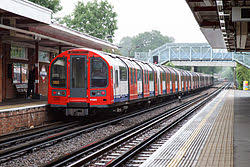The Importance of the Central Line in London’s Transport Network

Introduction
The Central Line, one of London’s most pivotal underground routes, plays a crucial role in the city’s public transport system. Stretching over 46 miles and serving 49 stations, this line connects west and east London, providing significant accessibility for residents, commuters, and tourists alike. With increasing demands for public transport solutions and a growing population, the relevance of the Central Line remains paramount to understanding the dynamics of London’s transport infrastructure.
Current Developments and Events
Recently, Transport for London (TfL) has announced enhancements to the Central Line network, aimed at improving service efficiency and passenger experience. Following the impact of the COVID-19 pandemic, when ridership plunged, there has been a steady return to normalcy. In response, TfL is implementing additional trains during peak hours and extending operating times on weekends to accommodate the increasing number of people relying on this vital transport link.
In September 2023, experiments with digital displays at select stations have commenced, aimed at providing real-time information on service disruptions, estimated arrival times of trains, and alternative routes for passengers. This initiative is part of an overall effort to modernise infrastructure and enhance user experience.
Challenges Faced
Despite these positive strides, the Central Line has faced its share of challenges, particularly regarding capacity and aging infrastructure. Congestion during rush hours continues to be an issue, with many trains running at full capacity. Efforts to upgrade the signalling systems are underway, which will significantly improve train frequencies and maximize usage of existing tracks.
Additionally, ongoing maintenance work has occasionally affected service schedules, causing temporary closures on selected sections of the line. TfL has been transparent about such works, ensuring that regular updates are provided to keep commuters informed.
Conclusion
Looking forward, the Central Line will continue to be a backbone of London’s transit network, adapting to the needs of a bustling metropolis. The ongoing investments in infrastructure upgrades, along with the enhancements in digital passenger services, signify a commitment to improving the flow of public transport. As London continues to evolve post-pandemic, the Central Line remains not only a historical piece of the city’s transport heritage but also a crucial element in its future accessibility and mobility. For residents, commuters, and tourists alike, the Central Line will continue to facilitate connectivity across one of the world’s most vibrant cities.








